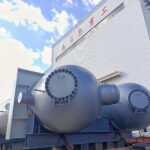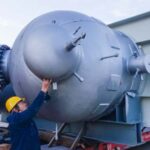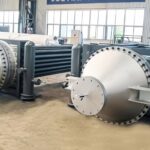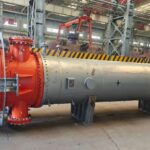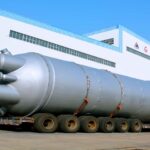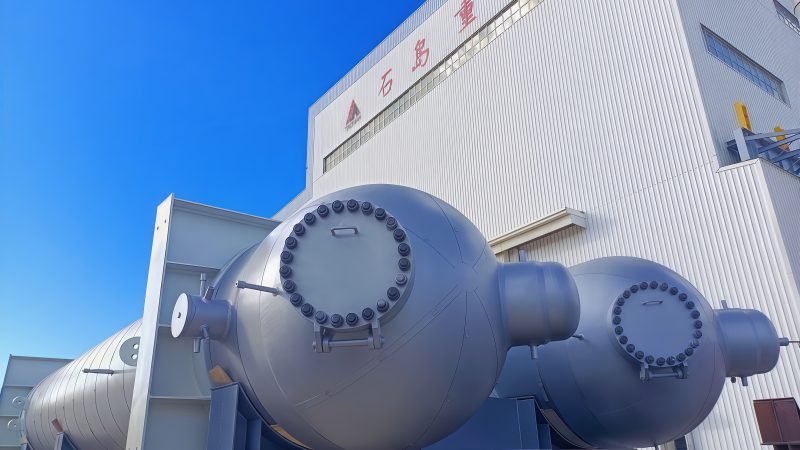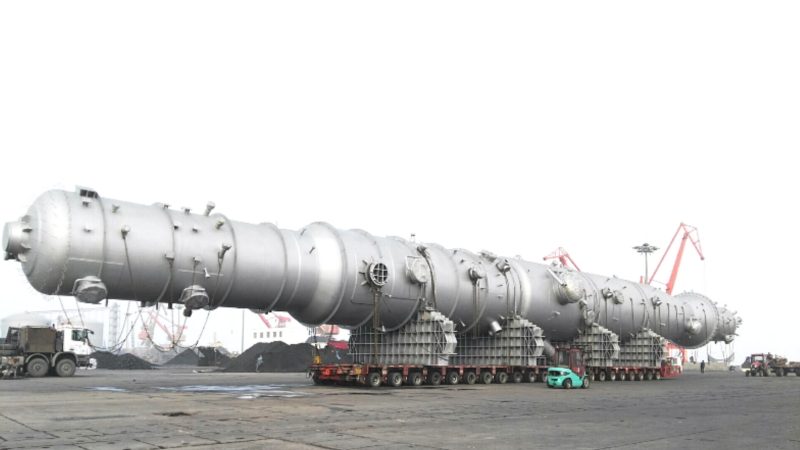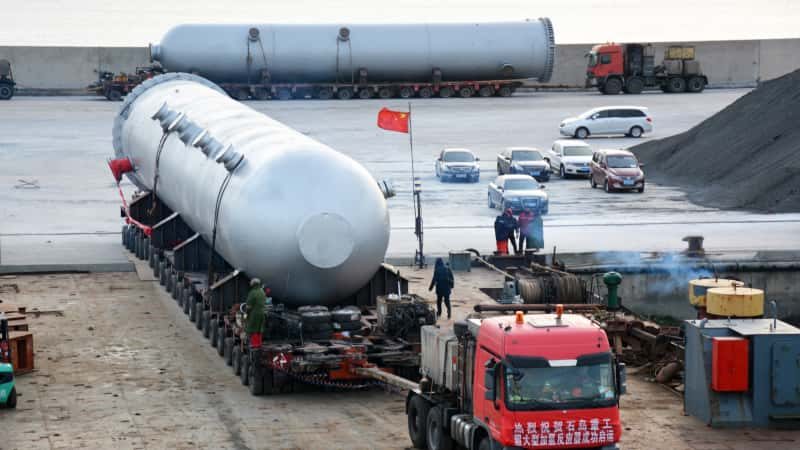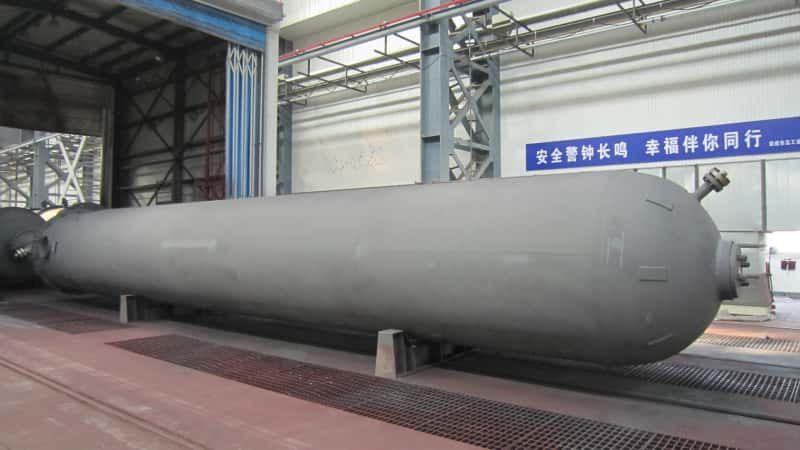In the high-stakes environment of a nuclear power plant, safely and efficiently transferring thermal energy is a matter of both engineering precision and public safety. The heart of this process lies in a specialized component: the heat exchanger. If misunderstood, it could compromise both reactor integrity and turbine efficiency. But when correctly designed and maintained, a nuclear heat exchanger becomes the keystone of thermal conversion—from nuclear heat to usable electricity. So, what exactly is a heat exchanger in a nuclear power plant, and how does it work?
A heat exchanger in a nuclear power plant is a component—often called a steam generator or steam exchanger—that transfers heat from the radioactive primary coolant loop (reactor side) to a secondary loop where water turns into steam to drive turbines, without mixing the two fluids. This ensures both thermal efficiency and radiological safety.
This mechanism allows nuclear energy to be safely harnessed without letting radioactive substances contaminate the electricity-generating components. Whether you’re a plant engineer, technician, or energy policy stakeholder, understanding this system is crucial to appreciating nuclear thermodynamics.
A heat exchanger in a nuclear plant directly transfers radioactive water into turbines.False
Heat exchangers isolate the radioactive primary loop from the turbine-driven secondary loop, preventing contamination.
Understanding the Nuclear Heat Transfer Cycle
The Role of Heat Exchangers in PWR and BWR Systems
There are two primary reactor types where heat exchangers operate differently:
| Reactor Type | Heat Exchanger Role |
|---|---|
| Pressurized Water Reactor (PWR) | Uses steam generators (large shell-and-tube heat exchangers) to transfer heat from radioactive primary coolant to a clean secondary steam system. |
| Boiling Water Reactor (BWR) | Water boils inside the reactor core, eliminating the need for a separate heat exchanger—but turbines receive radioactive steam and require shielding. |
Primary vs. Secondary Loop in PWR
In Pressurized Water Reactors (PWRs), which are the most common globally, the heat exchanger serves as the steam generator, keeping two fluid circuits separated:
- Primary Loop: Circulates pressurized water (\~300°C) through the reactor core. This loop is radioactive.
- Secondary Loop: Receives heat via steam generator tubing. The water turns into non-radioactive steam to drive turbines.
| Loop | Contains Radioactivity | Pressure | Temperature | Fluid Phase |
|---|---|---|---|---|
| Primary Loop | Yes | 150–160 bar | \~300°C | Liquid |
| Secondary Loop | No | 60–70 bar | \~270°C | Steam |
Pressurized water reactors (PWRs) use a heat exchanger called a steam generator.True
Steam generators transfer heat from radioactive primary water to a clean secondary loop that generates steam.
Design of a Nuclear Steam Generator
Shell-and-Tube Configuration
The steam generator is the most critical heat exchanger in a PWR. It usually features a vertical shell-and-tube design, where:
- Primary coolant flows inside U-shaped tubes.
- Secondary coolant (feedwater) surrounds these tubes and absorbs heat to vaporize.
Major Components
| Component | Function |
|---|---|
| U-Tube Bundle | Transfers heat from primary to secondary fluid |
| Tube Sheet | Separates radioactive and non-radioactive zones |
| Channel Head | Distributes primary water into tube bundle |
| Moisture Separator | Removes water droplets from steam |
| Feedwater Inlet | Introduces clean secondary water |
Operating Conditions
- Tube material is usually Inconel or stainless steel to resist corrosion and radiation damage.
- Flow design is optimized for counter-current heat transfer to maximize thermal efficiency.
Steam Generator Performance Table
| Metric | Typical Range |
|---|---|
| Heat transfer rate | 500 – 5,000 MWth |
| Pressure drop (primary) | 2 – 5 bar |
| Number of tubes | 3,000 – 10,000+ |
| Tube material lifespan | 20 – 30 years with maintenance |
Steam generators in nuclear plants are horizontal like in conventional heat exchangers.False
Nuclear steam generators are almost always vertical to support natural circulation and effective steam separation.
Heat Exchanger Safety & Design Challenges
Radiological Safety
The integrity of the tube walls is vital. A breach could allow radioactive water to leak into the turbine system, causing contamination.
- Non-destructive testing (NDT) like eddy current inspections are regularly used to check for wear, thinning, or corrosion.
- Redundancy and design margin are incorporated to prevent failure under seismic or thermal stress.
Corrosion and Fouling
Nuclear heat exchangers must withstand:
- Radiolysis-induced corrosion
- Thermal fatigue
- Oxide buildup on tube surfaces
Mitigation Strategies
| Challenge | Engineering Solution |
|---|---|
| Stress corrosion cracking | High-nickel alloys (Inconel 690) |
| Sludge/fouling | Chemical cleaning, blowdown systems |
| Heat transfer degradation | Automatic tube plugging or replacement programs |
A leak in a steam generator tube can release radiation into the turbine system.True
Tube integrity is critical because leakage compromises the separation between radioactive and non-radioactive systems.
Steam Generator vs. Other Plant Heat Exchangers
Besides the primary steam generator, nuclear plants use other heat exchangers:
| Exchanger Type | Function |
|---|---|
| Condenser | Cools exhaust steam from turbines using cold water |
| Auxiliary Heat Exchangers | Transfers heat in secondary or tertiary loops |
| Decay Heat Removal HX | Removes residual heat post-shutdown |
| Containment Cooling HX | Prevents overheating of reactor containment |
Each plays a role in either power generation or emergency safety systems.
Comparative Performance Table
| Type | Role in Plant | Design Pressure | Temp Range (°C) | Radioactive? |
|---|---|---|---|---|
| Steam Generator | Converts nuclear heat to steam | 160 bar | 270–300°C | Yes (primary side) |
| Condenser | Steam condensation | \~0.1 bar (vacuum) | 25–45°C | No |
| Emergency Cooling HX | Safety cooling post-shutdown | Varies | \~150°C | Yes |
The condenser in a nuclear plant is radioactive.False
Condensers are part of the non-radioactive secondary loop and handle clean steam.
Conclusion
In a nuclear power plant, the heat exchanger—specifically the steam generator—acts as the critical interface between the radioactive reactor core and the clean, steam-producing side of the system. It ensures both thermodynamic efficiency and containment of radiation, making it one of the most essential components in plant safety and performance. Its design, maintenance, and inspection require world-class engineering and constant vigilance.
📞 Need High-Specification Heat Exchangers for Nuclear Applications?
Contact us today for certified design, fabrication, or consultation on ASME Class 1 nuclear-grade heat exchangers. We deliver precision, safety, and performance for the most demanding environments.



